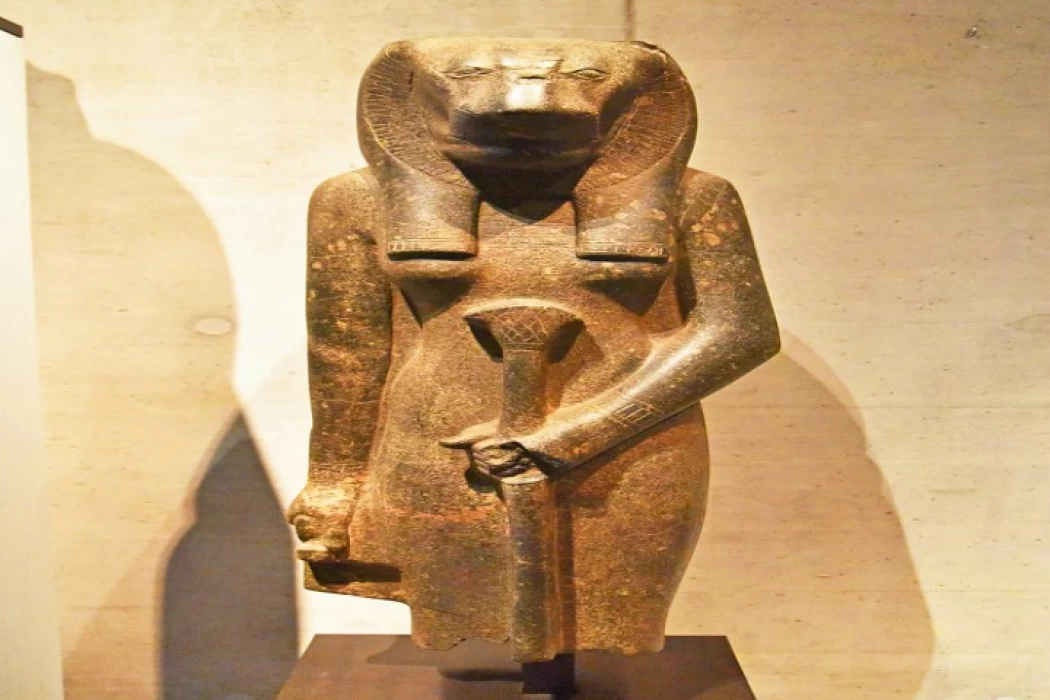
Diosa Sekhmet
Sekhmet, según la antigua religión egipcia, es la hija de Amun Ra, el dios del disco solar y el más importante entre los dioses del antiguo Egipto, esta deidad está representada con un cuerpo de mujer, una cabeza de leona y sobre ella un solar. disco, esta diosa siempre vestía un vestido rojo largo el cual personificaba sus raíces.
Por otro lado, por ser tan poderoso y temido, tuvo gran importancia para el rey Amenhotep III, quien ordenó la construcción de 365 estatuas para venerarlo y así poder calmar su ira.
Esta diosa estuvo a la altura de su nombre, que significa poderosa ya que tenía una doble personalidad, una era peligrosa y destructiva, sanguinaria y la otra protectora y curativa. Sekhmet trajo plagas y enfermedades, poseía siete flechas que usaba para lanzarla a sus enemigos, esta diosa de la guerra era muy temerosa por la humanidad.
Por otro lado, poseía un poder protector y curativo sobre todo para curar las fracturas en el ser humano por lo que se la llamaba la santa patrona de los médicos. Sekhmet era conocida como la diosa del amor por estimular las pasiones, siendo este el más hermoso de los dioses egipcios, y siempre lució espléndido.
Además, Sekhmet era conocida como el ojo de su padre Ra, el dios sol, quien, al ver que los humanos se rebelaron y ya no le iban a rendir tributo, decidió enviar a su hija para perseguirlos y destruirlos. Ella desató su gran ira y comienza a arremeter contra quienes le dieron la espalda a su padre. Su ira imparable fue tan grande y despiadada que el propio Dios Amun Ra sintió la misericordia de la humanidad y por esta razón decidió detenerla, pero fracasó.
Amun Ra, por lo tanto, decidió engañarla para que la detuviera, por lo que le ordenó que preparara un brebaje rojo y lo tirara en su camino, ella lo bebió pensando que era sangre y se emborrachó, así fue como detuvieron la furia de Sekhmet.
According to ancient Egyptian religion, Sekhmet is the daughter of Amun Ra, the god of the sun disk and the most important of the gods of ancient Egypt. This deity is depicted with a woman's body, a lioness's head, and a sun disk on top. This goddess always wore a long red robe, symbolizing her roots.
Furthermore, because she was so powerful and feared, she held great importance for King Amenhotep III, who ordered the construction of 365 statues to worship her and thus calm her anger.
On the other hand, she possessed protective and healing powers, primarily to heal human fractures, making her the patron saint of physicians. Sekhmet was known as the goddess of love, arousing passions, being the most beautiful of the Egyptian gods, and always splendid.
Furthermore, Sekhmet was known as the eye of her father, Ra, the sun god. Seeing that humans were rebelling and would no longer pay homage to her, he decided to send his daughter to pursue and destroy them. She unleashed her great anger and began to attack those who had turned their backs on her father. Her unstoppable anger was so great and merciless that even the god Amun Ra felt humanity's mercy and, therefore, decided to stop her, but failed.
The goddess Sekhmet was called “the devourer” because she played a role in the myth of the destruction of humanity. This was one of the most important myths in the history of Egyptian civilization, which tells the story of the god Ra, as she was the daughter of Ra and the eye of Ra, who sent her to destroy his enemies.
She took the form of a female lion and destroyed these human enemies, However, she continued to destroy even the innocent later on, to the extent that the god Ra wanted her to stop, so he carried out a certain trick to prevent her from continuing to destroy all humans.
The name Sekhmet comes from the ancient Egyptian word s, m, which means “strength or power”. The ancient Egyptian name for Sekhmet translates to “(strong or mighty person).”
Moreover, the goddess was also given titles such as “(one) before the one who trembles evil” “Lady of Dread”. In addition, the titles “Lady of Slaughter” and “She Moles” also refer to Sekhmet.
She is the wife of the god "Ptah" in the "Menf" trinity (Ptah; Sekhmet; Nefertum). She is the goddess of oppression in ancient Egypt, the daughter of the god "Ra", and his eye that attacks hostile forces; She is one of the most important goddesses who embodies the eye of the sun god "Ra".















